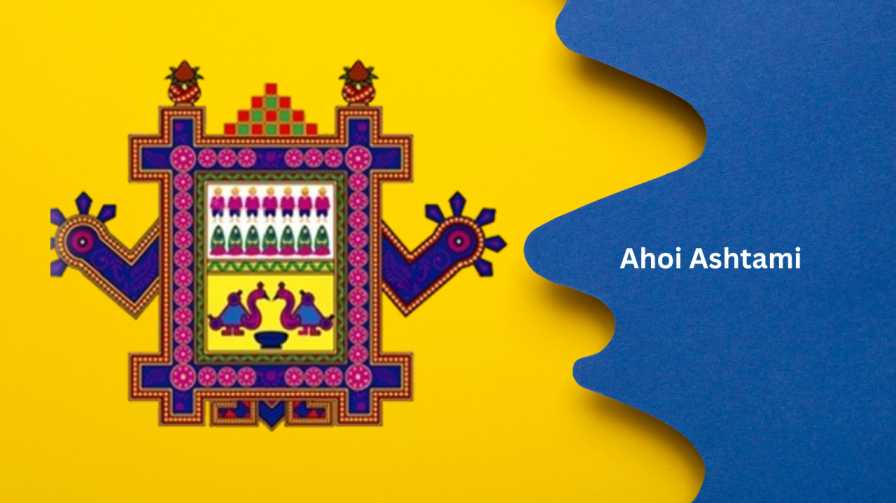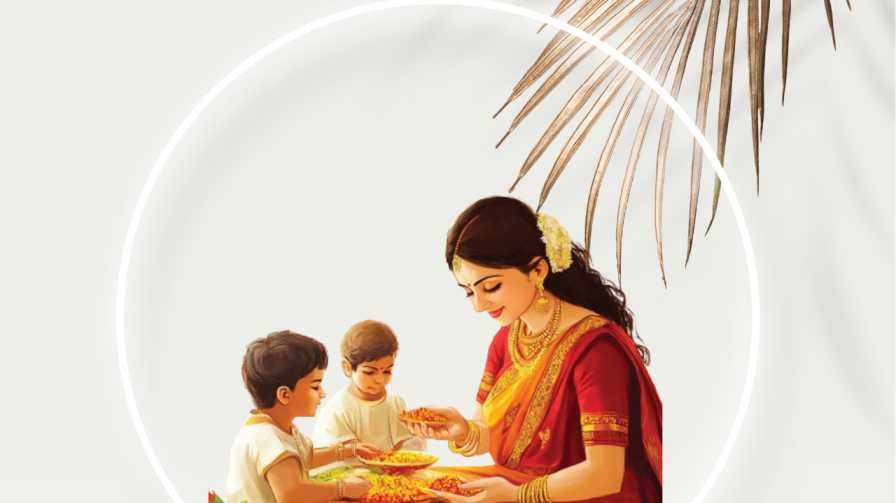Mothers commemorate Ahoi Ashtami, a Hindu holiday, mainly for their children’s health. According to the Hindu calendar, it occurs on Ashtami, the eighth day of the dark fortnight (Krishna Paksha) in the month of Kartik. It is observed in the month of Ashwin in the Amanta calendar, which is used in Maharashtra, Gujarat, and a few southern states. This is equivalent to the Gregorian calendar’s mid-October to November period. Four days following the Karva Chauth ceremony and eight days prior to the Diwali festival, Ahoi Ashtami is observed.
In North India, people celebrate Ahoi Ashtami with considerable fervour. The Goddess Ahoi, also known as Ahoi Mata, is worshipped on this day. Mothers are the only ones who follow the Ahoi Ashtami fast because it is a means of praying for their children’s long lives and health as well as for the blessings of having more children.
Customs surrounding Ahoi Ashtami
For her son’s protection and welfare, a mother follows a rigorous fast on Ahoi Ashtami. She doesn’t even drink a drop of water during the day. After seeing the stars in the evening, the fast is broken. Although it can be difficult because the moon rises late on Ahoi Ashtami night, some people who observe the Ahoi Ashtami fast break their fast after viewing the moon. In order to take a bath, women get up early. This is followed by a ‘Sankalp,’ wherein they promise to keep a fast for the sake of their children’s health all day. Before the sun sets, the worship is prepared.
In order to ensure that the Goddess Ahoi image on the wall has ‘Ashtakoshthak’, or eight corners, women create it. They also depict ‘Sei’, an elephant with her offspring, close to Goddess Ahoi in addition to this depiction. An Ahoi Ashtami wallpaper can be used in its place if drawing is not feasible. According to the Ahoi Ashtami Katha, the picture frequently depicts seven sons with their daughters-in-law.Decorative designs (Alpana) are created and the worship space is cleansed. The ‘Karwa,’ a clay pot, is put close to the site of prayer after being filled with water and covered with a lid. This Karwa’s spout is sealed with a unique grass known as “Sarayi Sinka.” This grass sprout is also offered to Goddess Ahoi during the ceremonies.

Ahoi Ashtami is actually worshipped in the evening, shortly after sunset. For the prayers, all of the family’s female members assemble. They hear the Ahoi Mata Vrat Katha following the ceremonies. Devotees in certain localities employ a silver idol of Ahoi called “Syau.” During the ceremonies, milk, roli, and akshat are used to worship this metal form.Women wear the ‘Syau’ around their necks after the worship, after it has been threaded with two silver beads. Puris, halwa, and pua are among the special food items that are created. Eight servings of these are presented to the goddess before being given to a Brahmin or an elderly woman. The chanting of “Ahoi Mata Ki Aarti” marks the end of the service.
Timings for Asthami Tithi: October 24 from 1:19 am until October 25 at 1:58 am
Muhurat for Ahoi Ashtami Puja: October 24, 05:50–07:06
What Ahoi Ashtami Means
Mothers of sons fast on Ahoi Ashtami in hopes of their children’s longevity and success. On this day, they devote themselves fully and enthusiastically to worshipping Goddess Ahoi. For the sake of their sons, women observe the fast. During Ahoi Ashtami, the Hindu calendar provides the times for seeing the stars and the moonrise.
It is thought that in order to obtain blessings for a son, ladies who experience miscarriages or struggle to conceive should fast and worship on Ahoi Ashtami. Therefore, the day is also called ‘Krishna Ashtami.’ For childless couples, it therefore has particular meaning. Couples visit Mathura’s ‘Radha Kund’ to take a sacred bath on this day. Many devotees from across the nation congregate here.
Ahoi Ashtami Vrat Katha
A merchant with seven sons resided in a city long ago, according to the Ahoi Ashtami Katha. The family was cleaning their house one day with seven days until Diwali. In order to gather soil for their home’s renovation, the merchant’s wife travelled to a nearby riverbed. She was digging in a pit when she discovered an elephant had built a den there. Her shovel struck a newborn elephant while she was excavating, killing it instantly.When the merchant’s wife realised this, she was deeply saddened and came home with a heavy heart. Her first kid died shortly after, then her second, and finally her third. All seven of her sons passed away within a year.
The loss of all her children caused the widow great sorrow. She sobbed as she told her sad tale to an elderly neighbour one day, admitting that she had not sinned on purpose and that the young elephant had been accidentally killed. The elderly woman listened to her predicament and consoled her, assuring her that half of her faults had been atoned for by her regret.

The elderly neighbour suggested that the woman make pictures of the elephant and her calves and worship them while pleading for pardon for what she had done in order to obtain the blessings of Goddess Ahoi on Ahoi Ashtami. By doing this, the neighbour promised her that God’s grace would wash away all of her sins.
Following the old woman’s counsel, the merchant’s wife followed the fast on the eighth day of the dark fortnight in the month of Kartik and started worshipping Goddess Ahoi. She was fortunate to have seven kids throughout the years as a result of continuing this practice annually. The custom of keeping the Ahoi Ashtami fast started in this way.

No responses yet